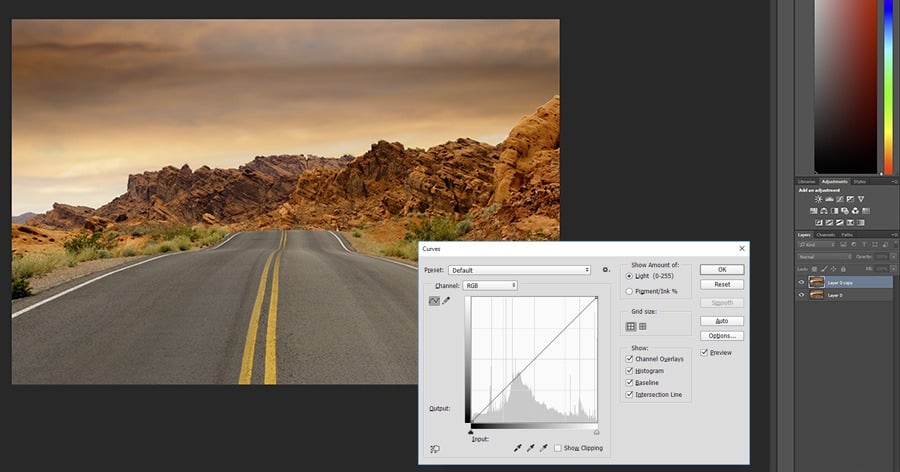Advanced Color Correction Techniques, In the realm of digital media and visual content creation, achieving the perfect color balance is paramount. Whether you’re a photographer, videographer, or graphic designer, ensuring that your visuals accurately represent reality is crucial. This is where color corrector service come into play, serving as indispensable tools to enhance and refine the color quality of images and videos. In this comprehensive guide, we will delve into the intricacies of color correction service, exploring what they are, how they work, and their significance in the world of digital content creation.
What is a Color Corrector Service?
Defining Color Correction
Color correction is the process of adjusting the colors in an image or video to achieve a desired and accurate representation of the visual content. It involves modifying the intensity, hue, and saturation of colors to ensure they align with the natural colors of the subject. While the human eye can often perceive colors accurately, capturing and reproducing them faithfully with cameras and other recording devices can be challenging due to various factors such as lighting conditions and technical limitations.
Introduction to Color Corrector Service
Color corrector service are specialized tools or software applications designed to streamline and simplify the color correction process. These services utilize advanced algorithms and image processing techniques to automatically or manually adjust color parameters, providing users with the means to enhance the visual appeal of their content.
How Does a Color Corrector Service Work?
1. Automated Color Correction Algorithms
Many color corrector service leverage sophisticated algorithms that can analyze the color composition of an image or video and make automatic adjustments. These algorithms take into account factors such as white balance, contrast, and color saturation to bring about a more balanced and realistic representation of the visual content.
2. Manual Adjustment Tools
In addition to automated algorithms, color corrector service often offer manual adjustment tools that allow users to have precise control over the color correction process. These tools enable users to selectively modify specific color channels, adjust brightness and contrast, and fine-tune other parameters to achieve the desired look.
3. White Balance Correction
One of the key aspects of color correction is addressing white balance issues. White balance refers to the color temperature of the light illuminating a scene, and it plays a crucial role in determining the overall color cast of an image or video. Color corrector service often include tools to correct white balance, ensuring that whites appear truly white, regardless of the lighting conditions during the capture.
4. Contrast and Saturation Adjustment
To enhance the visual impact of an image or video, color corrector services allow users to adjust contrast and saturation levels. This helps in achieving a balanced and vibrant look, bringing out the details in shadows and highlights while ensuring that colors are neither overly muted nor excessively saturated.
5. Color Grading
Color grading is an advanced form of color correction that involves the creative manipulation of colors to evoke specific emotions or moods. Many color corrector services include color grading tools that enable users to apply cinematic or artistic looks to their content, giving it a unique and stylized appearance.

Significance of Color Corrector Services in Digital Content Creation
1. Professionalism and Aesthetics
For professionals in fields such as photography, videography, and graphic design, maintaining a high level of professionalism in visual content is essential. Color corrector services enable creators to enhance the aesthetics of their work, ensuring that colors are true to life and visually appealing.
2. Consistency Across Platforms
In today’s digital age, content is shared across various platforms with different display technologies. Color corrector services help creators achieve consistency in color representation across different devices and platforms, ensuring that their work is perceived as intended by a diverse audience.
3. Correcting Environmental and Technical Limitations
Photographers and videographers often face challenges such as varying lighting conditions and technical constraints. Color corrector services empower creators to overcome these limitations, allowing them to salvage or enhance content that may have been affected by poor lighting or other technical issues.
4. Branding and Identity
For businesses and brands, maintaining a consistent visual identity is crucial for brand recognition. Color corrector services play a pivotal role in ensuring that branded content adheres to specific color standards, reinforcing the brand’s visual identity across various marketing materials.
Choosing the Right Color Corrector Service
1. Features and Functionality
When selecting a color corrector service, it’s essential to consider the features and functionality it offers. Look for services that provide both automated and manual correction tools, as well as advanced features like color grading if you require a higher level of creative control.
2. User-Friendliness
Ease of use is a critical factor, especially for those who may not have extensive experience in color correction. Opt for a color corrector service that offers an intuitive user interface and clear documentation to facilitate a smooth learning curve.
3. Compatibility and Integration
Ensure that the chosen color corrector service is compatible with the software and hardware you use for content creation. Integration with popular editing software and support for various file formats are key considerations for seamless workflow integration.
4. Performance and Speed
Efficiency is paramount in the fast-paced world of digital content creation. Choose a color corrector service that delivers high-performance results without compromising on speed, allowing you to optimize your workflow and meet tight deadlines.

Advanced Techniques in Color Correction Services
1. High Dynamic Range (HDR) Imaging
Some color corrector services offer advanced HDR imaging capabilities. HDR allows for a broader range of luminance and color, resulting in visuals with more depth and detail. This is particularly beneficial when working with scenes that have a wide contrast between dark and bright areas.
2. Skin Tone Enhancement
Achieving natural and flattering skin tones is crucial, especially in portrait photography and video production. Color corrector services often include tools specifically designed for skin tone enhancement, allowing creators to achieve a healthy and lifelike complexion.
3. Color Matching and Consistency
Maintaining color consistency across a series of images or videos is essential for projects like photo albums, video series, or branding campaigns. Color corrector services may include features for color matching, ensuring a harmonious and uniform look throughout a set of visuals.
4. Batch Processing for Efficiency
For professionals handling large volumes of images or videos, batch processing capabilities are invaluable. Color corrector services that support batch processing enable users to apply consistent color adjustments to multiple files simultaneously, saving time and streamlining the editing workflow.
Emerging Trends in Color Correction Services
1. Artificial Intelligence (AI) Integration
The integration of artificial intelligence in color correction services is an emerging trend. AI algorithms can analyze vast datasets to improve color correction accuracy and efficiency, providing users with intelligent suggestions and automated enhancements based on advanced learning patterns.
2. Real-Time Color Correction for Live Streaming
With the rise of live streaming and real-time content creation, color correction services are adapting to provide real-time adjustments. This is particularly useful for live broadcasts, ensuring that the audience sees optimized visuals without the need for post-production editing.
3. Cloud-Based Color Correction Services
Cloud-based color correction services offer the advantage of accessibility and collaboration. Creators can edit and correct colors from anywhere with an internet connection, and multiple team members can collaborate on a project simultaneously, making the editing process more flexible and efficient.

Tips for Effective Color Correction
1. Start with a Properly Calibrated Monitor
Before diving into color correction, ensure that your monitor is properly calibrated. A calibrated monitor provides a reliable representation of colors, allowing you to make accurate adjustments.
2. Use Reference Images
If color accuracy is paramount, use reference images taken under similar lighting conditions as a guide. This can help you achieve a more realistic representation of colors in your own visuals.
3. Experiment with Color Grading
While color correction aims for accuracy, color grading allows for creative expression. Experiment with different color grading techniques to add a unique and stylized look to your content.
4. Regularly Save and Backup Your Work
Color correction involves numerous adjustments, and it’s essential to save your progress regularly. Additionally, create backups of your original files to avoid any loss of data during the editing process.
The Evolution of Color Correction Services in Different Industries
1. Film and Video Production
Color correction has long been a staple in the film and video production industry. With the transition to digital filmmaking, color correction services have become even more integral to the post-production process. Filmmakers can use these tools to create a consistent visual narrative, enhance mood and atmosphere, and correct any discrepancies introduced during shooting.
2. E-Commerce and Product Photography
In the e-commerce world, where product images significantly influence purchasing decisions, color accuracy is paramount. Color correction services enable e-commerce businesses to showcase their products in the most appealing and realistic way possible. This is particularly crucial for industries like fashion, where the color of clothing items can heavily impact consumer choices.
3. Medical Imaging and Scientific Visualization
In scientific and medical fields, accurate representation of data and images is critical. Color correction services play a vital role in ensuring that medical images, such as X-rays or MRI scans, are displayed with precision. This not only aids in diagnosis but also contributes to the effectiveness of scientific presentations and publications.
4. Gaming and Virtual Reality (VR)
As the gaming and VR industries continue to advance, the demand for realistic and immersive visuals has grown. Color correction services are employed to fine-tune the color grading of in-game graphics and virtual environments. This enhances the overall gaming experience by providing players with visually stunning and cohesive worlds.

Common Challenges in Color Correction and Solutions
1. Inconsistent Lighting Conditions
Challenges arise when working with images or footage captured under diverse lighting conditions. Color correction services often offer tools to address these issues, allowing users to balance colors and correct for discrepancies introduced by varying light sources.
2. Color Space Variations
Different devices and platforms may use different color spaces, leading to variations in how colors are displayed. Color correction services with color space conversion capabilities help ensure consistent color representation across various devices and platforms.
3. Limited Color Information in Source Material
Some source materials may have limited color information, making it challenging to achieve desired results through color correction alone. In such cases, color correction services may include features like color enhancement or upscaling to improve the overall visual quality.
4. Workflow Integration Challenges
For professionals working with multiple software applications, seamless workflow integration is crucial. Color correction services that offer compatibility with popular editing software and support industry-standard file formats facilitate a smoother and more efficient editing process.
The Future of Color Correction Services: What to Expect
1. AI-Driven Automation
The integration of artificial intelligence is likely to become more prevalent, with color correction services utilizing AI to automate complex tasks and enhance the accuracy of corrections. This could lead to more efficient workflows and a reduction in manual intervention.
2. Augmented Reality (AR) Integration
As AR technologies continue to advance, color correction services may incorporate AR features, allowing users to visualize color corrections in real-time within their physical environment. This can provide a more immersive and interactive editing experience.
3. Cross-Platform Collaboration
With an increasing emphasis on collaboration in content creation, color correction services may evolve to facilitate seamless collaboration among team members working on different platforms. Cloud-based solutions and real-time editing features could play a significant role in this evolution.

Conclusion: Mastering the Art and Science of Color Correction
Color correction services have come a long way, evolving from basic tools to sophisticated platforms that cater to the diverse needs of content creators across various industries. Whether you’re a filmmaker striving for cinematic perfection, a photographer aiming for stunning product images, or a scientist presenting accurate visual data, the right color correction service can be your ally in achieving your goals.
Stay abreast of industry trends, experiment with new features, and continue honing your color correction skills. By mastering the art and science of color correction, you empower yourself to create visuals that not only meet but exceed the expectations of your audience. Embrace the journey of continuous learning and exploration in the dynamic world of color correction services, and watch as your creative endeavors flourish with vibrant and captivating visuals.

